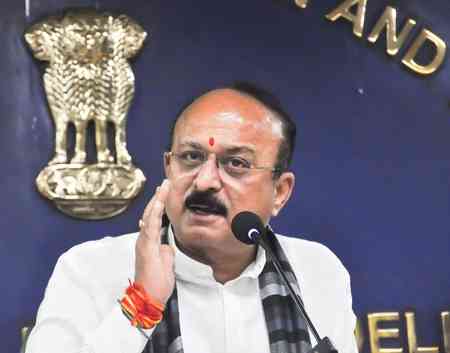India Needs Another Phase of the Green and White Revolution
With a growing population and increasing demand for essential commodities such as wheat, rice, vegetables, fruits, milk, ghee, and butter, India urgently requires a renewed phase of both the Green and White Revolutions. This step is essential to balance the future demand and supply of these vital goods and ensure food security for the nation.

With a growing population and increasing demand for essential commodities such as wheat, rice, vegetables, fruits, milk, ghee, and butter, India urgently requires a renewed phase of both the Green and White Revolutions. This step is essential to balance the future demand and supply of these vital goods and ensure food security for the nation.
Rising Demand Due to Population Growth
As India's population continues to expand, the demand for essential agricultural produce will multiply significantly. Coupled with industrial growth and the country's aspirations of achieving developed nation status, there is an immediate need to design a new agricultural policy focused on enhancing crop yields.
The challenges are amplified by the decreasing availability of agricultural land, which is being converted for urbanization, residential projects, and infrastructure development. The construction of new expressways and highways by the National Highway Authority of India, while necessary for economic growth, further reduces arable land. In light of this, adopting advanced agricultural techniques, effective use of fertilizers, pesticides, and modern irrigation systems is imperative.
Green Revolution: A Renewed Approach
The original Green Revolution, initiated during the Third Five-Year Plan, aimed to achieve self-sufficiency in food grains. Punjab played a pioneering role, producing bumper crops to feed the nation. Over the years, advancements in agricultural research and the guidance of scientists have enabled other states to also achieve significant growth in crop production.
However, future strategies must prioritize crop diversity and water conservation to address environmental challenges. Research centers and agricultural universities must continue to innovate, developing technologies and practices that ensure higher yields while using limited resources efficiently.
White Revolution: Meeting the Rising Demand for Dairy Products
The growing demand for milk and milk products in India necessitates a renewed White Revolution. Dairy farming has emerged as a promising sector, providing not only increased production but also livelihood opportunities.
Government initiatives have already promoted dairy farming, offering subsidies, minimum support prices (MSPs) for milk, and guidance to unemployed youth. Allocating land for dairy farming and providing green pastures at subsidized rates can further encourage entrepreneurship in this sector. These measures will ensure a consistent supply of milk and related products while creating sustainable job opportunities.
The Way Forward
To address the dual challenges of limited agricultural land and increased demand, the following steps are crucial:
1. Policy Reforms: Develop a comprehensive agricultural policy focused on yield improvement, land-use optimization, and sustainability.
2. Technological Advancements: Encourage the adoption of advanced farming techniques and promote research on crop diversification and water management.
3. Support for Farmers: Provide financial assistance, training, and resources to farmers for adopting modern practices.
4. Dairy Sector Growth: Expand dairy farming initiatives with targeted subsidies, education, and infrastructural support.
Both the Green and White Revolutions transformed India into a self-reliant nation in agriculture and dairy production. A renewed effort in these areas is the need of the hour to ensure that India remains prepared for future challenges.
Authored by:
Rajat Kumar Mohindru
Journalist, Jalandhar City.


 Rajat Kumar
Rajat Kumar 










